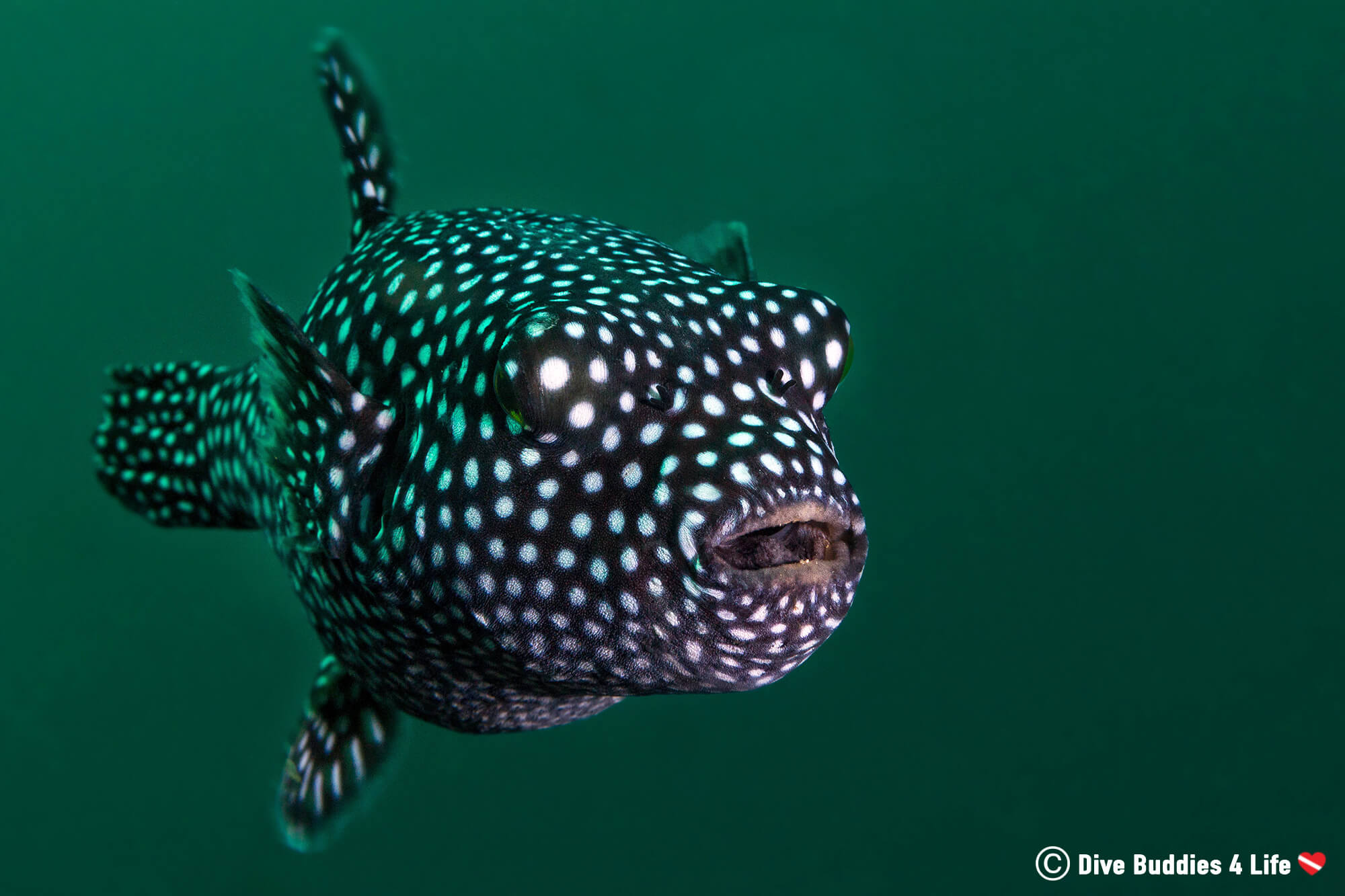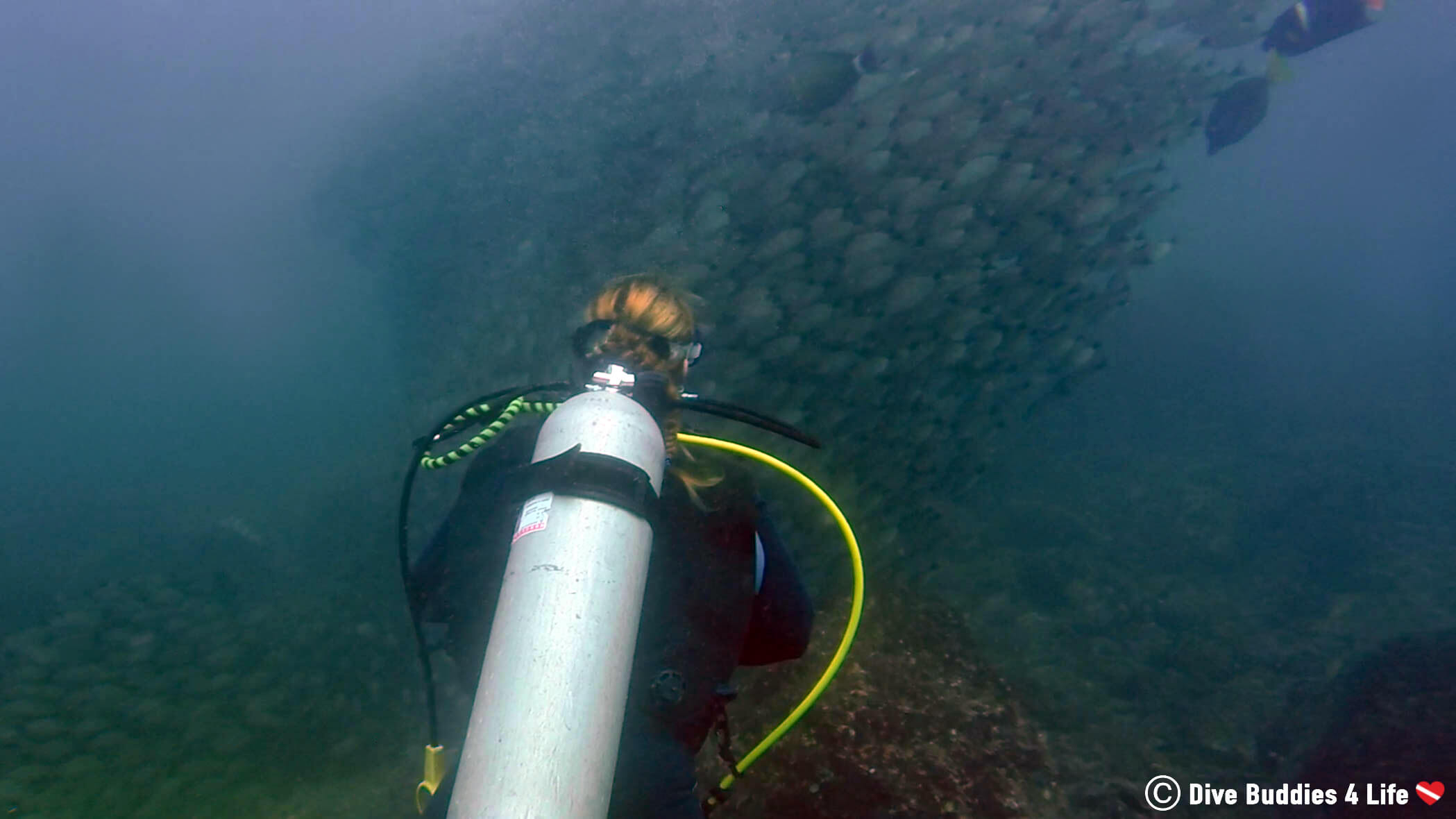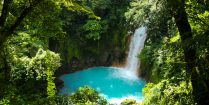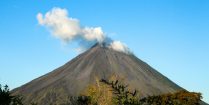It was day two after Mom and Dad’s arrival in Costa Rica, that we decided to hit the water for a day of diving at the Catalina Islands. We wanted to get our diving well out of the way before heading inland, up into the jungly cloud forest of Monteverde.
The Catalina Islands are a collection of 20 outcroppings and islands formed by volcanic activity. They are considered one of the best dive sites in Costa Rica and can be found from 3 to 24 kilometers off the Nicoya peninsula.
Strong currents and a fantastic ecosystem make this site a favorite for large schools of fish and different species of rays, specifically manta rays!

Joey and I were slightly nervous to head back out on the water less than two weeks after our Bat Island dive. Our last venture on the Pacific had been a nauseating one, and we were worried that our disastrous episodes of seasickness would come back. I don’t think I could have handled another day of almost non-stop puking so quickly after the last.
As always, Mom was looking out for us. She brought some motion sickness patches were to go behind our ear prior to diving. Unlike Gravol, which helps nausea at the price of making you very sleepy, the motion sickness patch is designed to keep the seasickness at bay without the feeling of drowsiness.

Seasickness FYI: As a diver, sometimes you get hit with seasickness. For solutions on dealing with seasickness before and during your dive check out our post about 5 ways of dealing with seasickness.
We woke up at an ungodly time of the morning, to pack our scuba things and head out diving.
The sky was a faded blue and we hadn’t even heard the rooster’s crow from surrounding farms. By 7 AM we met the Summer Salt crew at the dive shop and boarded the boat for a 45-minute ride to the Catalina Islands. Elated that our motion sickness patches were working like a charm, we listened to the dive briefing, rolled into the Pacific and dropped down to 40 feet where we would begin the dive.


Diving Catalina boasted similar species to Bat Islands. Colorful fish, octopus, and stingrays eyed us suspiciously as we entered their domain.

Piles of porous black lava rock took shape on the bottom with the occasional aggregation of coral and algae growth on it.
As we descended deeper we hit a whoopingly cold thermocline. The cold water pierced through our wetsuits like they were made of mesh. It was enough to give me instant-goosebumps. Brrrrrrrr!
In spite of the cold down below, I spend most of the dive playing detective Nancy Drew. I would scout out every little creature I could lay eyes on, and show them to my dad.

My favorite sighting was a little snowflake moray that had made a den in the crevasse of some rocks. He was white etched in a black abstract pattern. When I approached, he recoiled and reared its fangs. In moray language that was code for; get the heck away from me or I will bite. You didn’t need to tell me twice.
A couple of times, on our dives, a white tip shark cruised through the water just at the edge of our vision. Unfortunately, the shark swam by too quickly and was a little too far to estimate its size.
Our eagle-eyed divemaster also found a teeny-weeny yellow sea horse. The sea horse was anchored with its hooked tail, on some soft coral swaying in the ebb and flow of the current. It was a first for me – I had never seen a seahorse in the wild before, let alone a canary yellow one.


Just like the Bat Islands scuba diving adventure, Joey and I had enjoyed a few weeks before, several large schools of grunts came pouring into the picture.


The Pacific ocean was intent on putting on a show and we had lucked into front row seats.
The grunts came out of what felt like nowhere and encircled us like one giant tornado. Left, right, front and back… Everywhere I looked there were silver and yellow fish bodies that filled my field of vision. They were close enough that I could see every nick and scale missing on their body, yet at the same time, they danced just out of our reach.
I could have spent hours upon hours with this gigantic tornado of fish, getting lost in the maze of swimming critter.
Dad used his air up faster than everyone else in our group, so he ascended to surface early. Just below 1000 PSI, it was time for Joey and me to make our way to the surface, after a recommended 15-foot safety stop.
In total Dad, Joey and I spent 150 minutes underwater split over three dives. The time we spend beneath the surface was pure bliss.
More than just a dive site sporting the same name as salad dressing, the Catalina Islands are home to marine wildlife big and small, of which we only got a glimpse at some of its inhabitants.

Have you ever traveled to Costa Rica? What is your most memorable diving adventure on this countries Pacific coast?
Writers Note: This post may contain affiliate links. We will make a small commission if you make a purchase through one of these links, at no extra cost to you. See full disclosure and disclaimer policy here.


Bat Islands are a collection of volcanic islands off the coast of Costa Rica with some pretty unique diving.

Hidden in the jungles of Tenorio National Park, the Río Celeste proves time and time again that it is a favourite waterfall among Costa Rican tourists.

La Fortuna is a small city with a big personality. This tourist hot spot has some unique outdoor places that are a must-see.

The Miravalles Volcano Tour gave us a the best overview of some of Costa Rica's highlighted activities.

Slipping into the Pacific waters off Costa Rica for a snorkel is a relaxing way to spend the day. Here are the best places around Playa del Coco.

Read about our trip to Ostional and find out about the prime sea turtle nesting beaches in Costa Rica.

Step up your scuba diving game by jumping into the volcanic crater of Nicaragua's Laguna Apoyo.

The sea life was plentiful at the Catalina Islands. It was the perfect spot to introduce Dad to Costa Rica's underwater playground!
